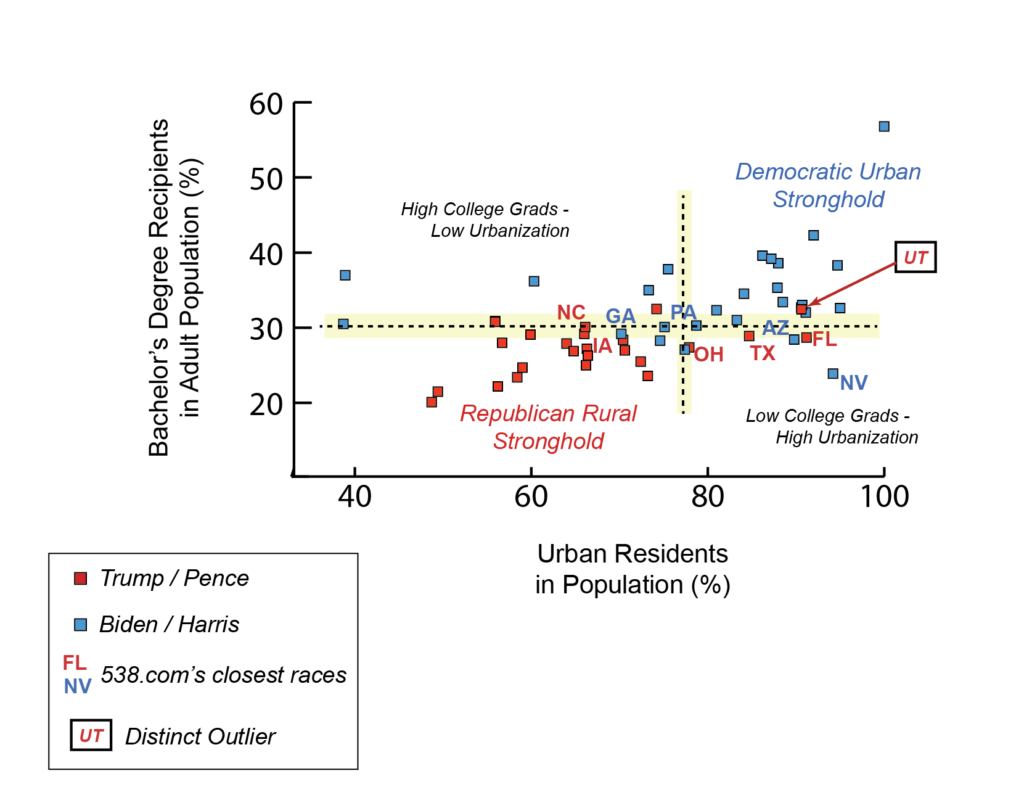Go to article here …

Rather than delve into issue opinion polling, or assess presidential campaign strategies, political demographers assume that political change is the predictable product of a set of mutually reinforcing social, economic, and demographic transitions, which can be tracked using data. But is this true in a country like the United States that has been in the advanced stages of these development transitions for decades? If these transitions are as important as demographers believe, could their variation among the 50 states explain the outcome of the recent U.S. presidential election? If so, what could they tell us about America’s electoral future?
My attempt to answer these questions begins with a brief discussion of the CNN exit polling during the 2016 presidential election and ends with an analysis of the 2020 state results. Given what has already been said about the Democratic Party’s appeal among college-educated Americans and the Republican Party’s appeal among rural Americans, the basic conclusions are not surprising. What I find surprising is the ability of these individual party strengths, almost by themselves, to divide America’s states into a hard-to-change red and blue pattern. ….. (continue)
Read more at the Wilson Center’s New Security Beat or download article here.

Figure. U.S. Presidential election results, Nov. 2020, showing each state’s proportion of college graduates (vertical axis) and proportion of urban residents (horizontal axis).
